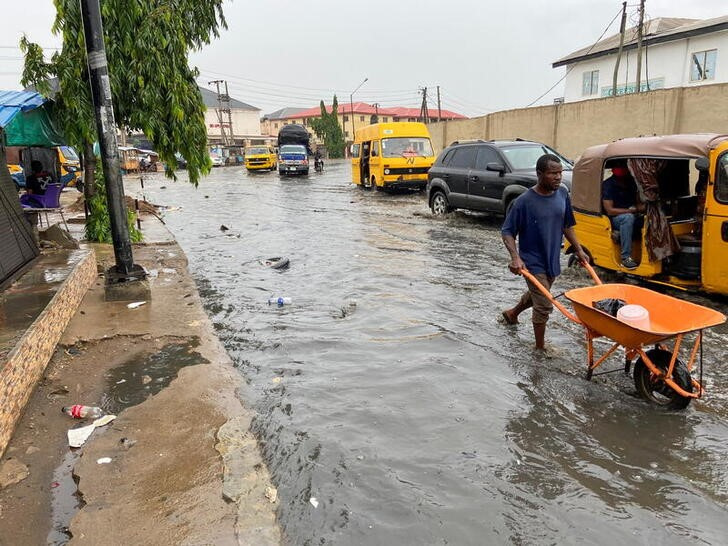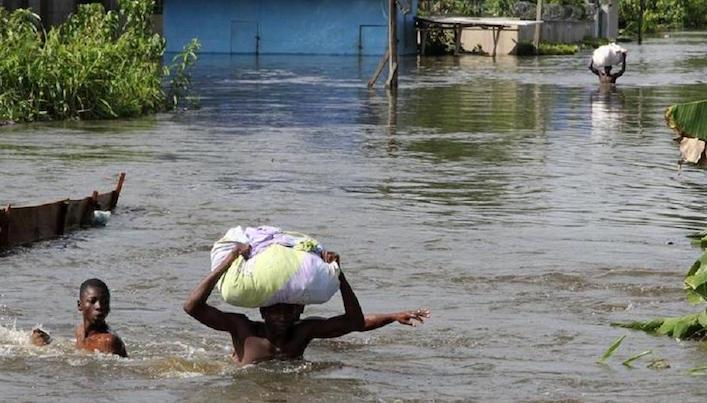Heavy rainfall in Lagos, Nigeria’s largest city, has resulted in severe flooding across multiple areas, causing significant disruptions to daily life and forcing schools to close. The downpour, which began around 3 a.m. on Wednesday, has left many residents stranded and rendered streets impassable.

The Iyana-Oworo and Olopo Meji areas leading to the Third Mainland Bridge were particularly affected, with floodwaters rendering the road nearly impassable and causing extensive traffic jams. Social media users shared videos of the flooded areas, showcasing the severity of the situation.

In White Sand Estate, Isheri-Osun, one of the hardest-hit locations, schools have advised students to stay home due to hazardous road conditions. The flooding in this area has reached mid-level heights inside residences, trapping many inhabitants in their homes. A school in the area sent a message to parents, stating, “Due to the downpour and a predicted serious rainy weather forecast today, we have decided to close the school and postpone today’s exam. As you can see, almost everywhere is flooded.”
Johnson Olabode, the Public Relations Officer of the area’s Community Development Committee, expressed frustration with the recurring issue: “We are at it again this year. Everywhere is filled with water. I have been up since 3am when the rain started, and all I could do was watch my house get flooded.”

Residents of White Sand Estate, which suffers from poor roads, inadequate drainage systems, and lack of maintenance, have called on the Lagos State Government to urgently address the problem. John Adewale, a resident, described the flooding as “a yearly nightmare,” emphasizing the need for better drainage systems.
The flooding extends beyond White Sand Estate, affecting areas such as Oshodi and Lagos Island, bringing activities to a standstill across much of the city. Videos and pictures posted online reveal the extent of the flooding in different parts of Lagos.

This latest flooding incident highlights the broader infrastructure challenges facing Lagos, a rapidly growing megacity. As climate change potentially increases the frequency and intensity of such weather events, the need for improved urban planning, drainage systems, and flood management strategies becomes increasingly urgent.
The situation underscores the critical importance of addressing Lagos’ infrastructure deficits to ensure the safety and well-being of its residents. As the city grapples with this latest flood, attention turns to both immediate relief efforts and long-term solutions to mitigate future flooding incidents.



